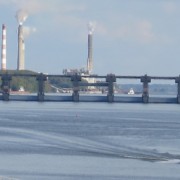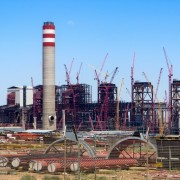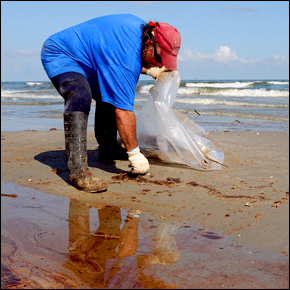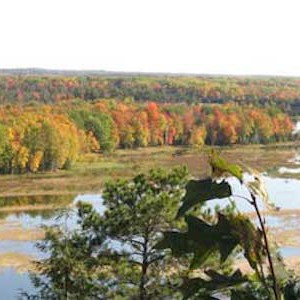Water Pollution Solution — New York Experiments with Coal Tar “Sponges” in Hudson River
Testing new methods to remove residual coal tar from riverbeds in New York.
For the last 18 months, research engineers and a New York state utility have been using a Hudson River contamination site as a laboratory, testing a new way to remove pollutants from riverbeds, the Times Herald-Record reports.
During the last week of November, utility workers from Central Hudson Gas & Electric and engineers from the Electric Power Research Institute began removing mattress-sized absorbent panels from the Hudson River at Poughkeepsie, about 80 miles north of New York City.
In place since May 2009, the 75 panels are filled with organo-clay—a mineral that draws oil like a magnet—and are designed to remove coal tar from the riverbed. Typically, the organo-clay is scattered on the site, and the soil is then dredged or excavated. The Poughkeepsie location was too technically challenging for heavy machinery to operate, however, due to river depth and a strong current.
“This is very much a research project,” said Wayne Mancroni, a senior environmental researcher at Central Hudson, to the Times Herald-Record. “We’re uncertain just how well they’re going to do at absorbing the material.”
Coal tar pollution—estimated at $3 billion in remediation costs—is widespread in New York, with similar polluted sites all along the Hudson Valley, as well as rivers off Lake Erie. Coal tar remediation is is the third most expensive clean-up in New York, after PCB removal from the Hudson River and waste removal from Onondaga Lake.
When manufactured gas plants burned coal, released gases were captured and cooled to form natural gas, benzene, and a dozen other compounds. To “crack” coal, high pressure water vapor was used, so manufactured gas plants were often located along waterways that were pumped to cool the machinery.
The waste product from this process was coal tar, a dark-colored, slightly-viscous liquid with the same consistency as cooking oil. Gas plants dumped the tar either into storage tanks that eventually leaked, or into shallow pits near the facility, where some of the tar leached into the soil. From there, it wasn’t far for the tar to travel to settle in nearby river beds.
The new clean-up technology, including 10,000 square feet of panels removed from the Hudson River, will be tested to determine its effectiveness. If the results are positive, the panels could be reinstalled permanently in Poughkeepsie, and this method could potentially be used at similarly polluted sites throughout the state.
The New York State Department of Environmental Conservation (NYS DEC) estimates that manufactured gas was produced at roughly 300 sites in the state. Recovery programs are in progress or planned for 194 of those, which can be seen in the interactive map below.
View Coal Tar Pollution: New York Clean-up Sites in a larger map. Map © Aubrey Ann Parker/Circle of Blue
There are only 18 sites that qualify as State Superfund sites, and one that has been placed on the U.S. Environmental Protection Agency’s National Priority List. At this time, the NYS DEC has deferred listing a site as a Superfund clean-up if a utility can be held accountable.
**Coal tar is not the same as coal ash, which is a cancer-causing pollutant produced by some coal-fired power plants. Read more about coal ash contamination in Tennessee and Indiana on Circle of Blue.
Source: Times Herald-Record, New York State Department of Environmental Conservation

Brett writes about agriculture, energy, infrastructure, and the politics and economics of water in the United States. He also writes the Federal Water Tap, Circle of Blue’s weekly digest of U.S. government water news. He is the winner of two Society of Environmental Journalists reporting awards, one of the top honors in American environmental journalism: first place for explanatory reporting for a series on septic system pollution in the United States(2016) and third place for beat reporting in a small market (2014). He received the Sierra Club’s Distinguished Service Award in 2018. Brett lives in Seattle, where he hikes the mountains and bakes pies. Contact Brett Walton











Leave a Reply
Want to join the discussion?Feel free to contribute!